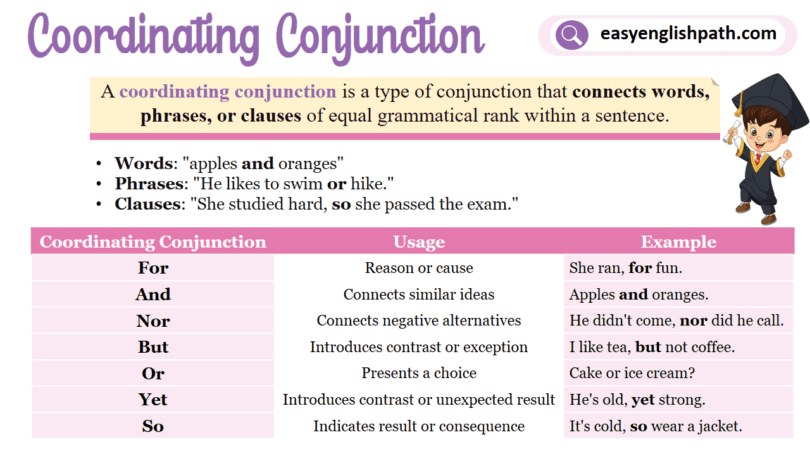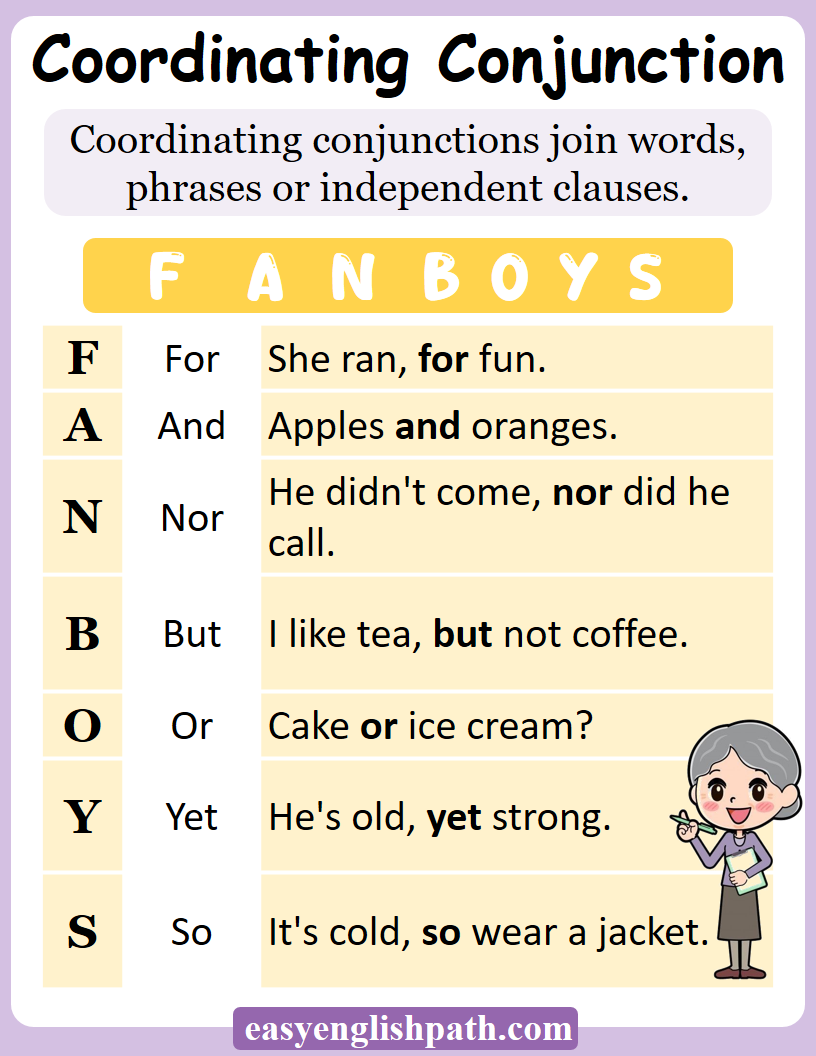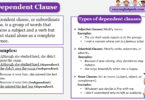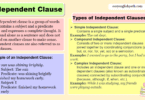Coordinating conjunctions are used to connect ideas and make sentences more interesting. Words like and, but, or, and so are coordinating conjunctions. These are the words that help us to put words together in a sentence. Coordinating conjunctions are important because they make our sentences clear.
What are Coordinating Conjunctions?
Coordinating conjunctions are words that connect words, phrases, or clauses. They join elements that are similar in structure and importance within a sentence.
- She was late for work due to traffic.
- She likes to read novels and magazines.
- He’s smart, but he’s lazy.
- Should we go now, or wait until later?
Usages of Coordinating Conjunctions:
- Joining Independent Clauses
- Joining Words or Phrases
- Joining Items In a List
- Joining Clauses in a Compound Predicate
- Joining Contrasting Ideas
- Expressing Cause and Effect
Joining Independent Clauses:
Coordinating conjunctions are most commonly used to connect two independent clauses to form compound sentences.
- He ran, but he got tired.
- She sings, and he dances.
- She’s smart, yet she’s lazy.
Joining Words or Phrases:
They can easily connect words or phrases of equal grammatical rank within a sentence.
- Tea or coffee?
- Pizza and salad.
- Tall but thin.
Joining Items In a List:
Coordinating conjunctions can link items in a series or list.
- Pen, paper, and books.
- Soup, salad, or sandwich.
- Reading, writing, and drawing.
Joining Clauses In a Compound Predicate:
They can join clauses that share the same subject, creating a compound predicate.
- He cooked and cleaned.
- She laughed but cried.
- They danced and sang.
Joining Contrasting Ideas:
Coordinating conjunctions can also be used to express contrast or contradiction.
- Rich but unhappy.
- Tall yet graceful.
- Sunny but cold.
Expressing Cause and Effect:
In some cases, coordinating conjunctions can indicate cause-and-effect relationships.
- He studied hard, so he passed.
- She exercised, so she’s fit.
- They worked late, so they finished.
Coordinating Conjunction Examples:
- He’s saving money for a trip to Europe.
- The restaurant serves pizza and pasta.
- She could neither hear the music nor see the stage from her seat.
- He’s talented, but he’s very modest about his skills.
- Should we go by car or take the bus?
- She studied hard, yet she failed the exam.
- She studied diligently, so she aced the test.
You May Also Like this






